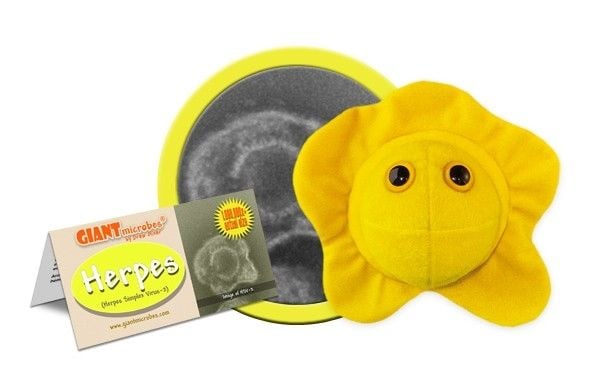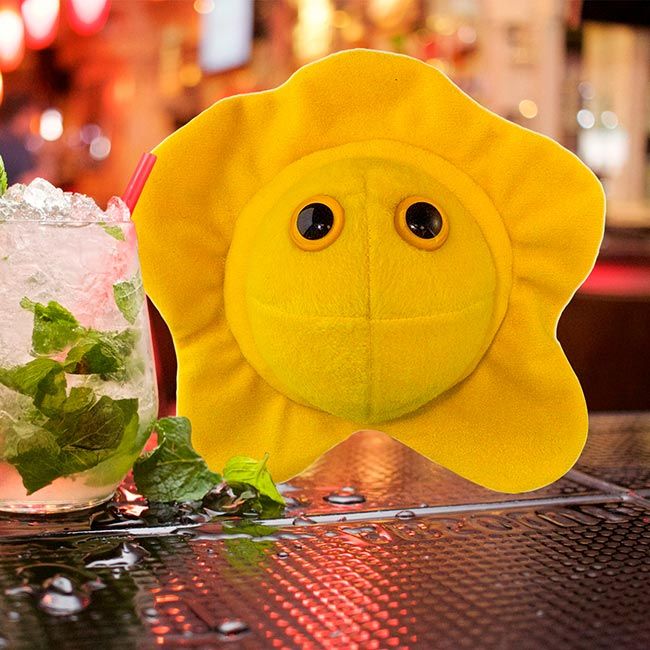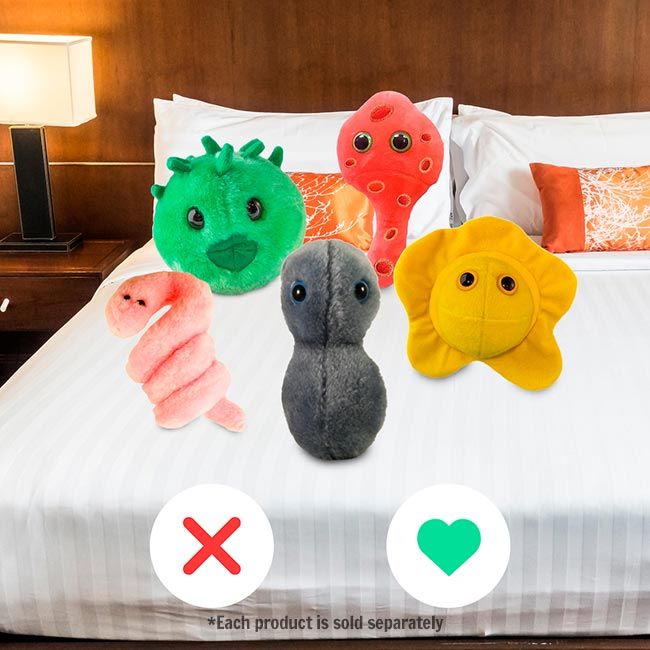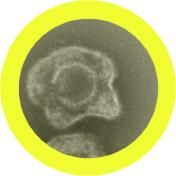Herpes (Herpes Simplex Virus 2)
GIANTmicrobes STDs were featured on NPR's popular game show Wait Wait.. Don't Tell Me!
Product Details
Additional Information
| Sizes | Giantmicrobes are based on actual microbes, cells, organisms and other critters, only 1,000,000 times actual size! Gigantic (GG) 40-60cm XL (XL) 25-38cm Original (PD) 12-20cm Minis (MM) 5-10cm each Keychain (KC) 5-10cm with clip |
|---|---|
| Materials | Plush from all new materials. Stuffed with polyester fiber fill. Surface washable: sponge with water & soap, air dry. |
| Packaging | Each plush microbe includes a printed card with fun, educational and fascinating facts about the actual microbe or cell. |
| Safety | Every product meets or exceeds U.S. and European standards for safety. For ages 3 and up. |
All about Herpes (Herpes Simplex Virus 2)
FACTS: Herpes is one of the great-granddaddies of sexually transmitted diseases – the word “herpes” (Greek for “creep”) was used by Hippocrates himself 2,500 years ago to describe lesions that appeared to creep along the skin as they spread.
Whether HSV-2 (herpes simplex virus-2, the common cause of herpes) was itself responsible for these historic lesions is, of course, unknown. Other pathogens can produce similar sores. And in fact, HSV-1, which usually causes the oral lesions known as “cold sores,” can also cause the genital lesions called “herpes.”(And HSV-2 can cause cold sores!)
Actually, the primary difference between HSV-2 and HSV-1 appears to be the proclivity of the former, after initial infection, to establish itself in the nerves found at the base of the spine, as compared with the proclivity of the later to establish itself near the nerves of the ear – with the resulting outbreaks more or less geographically determined.
In many instances, herpes infections produce no symptoms at all, which naturally helps them to spread. In fact, the traumatic outbreaks typical of the disease occur in only about a third of cases, depending on the strength of the immune system, the length of time the person has been infected (outbreaks decrease with time), and whether the virus is ensconced in its favorite spot.
And if that sounds confusing, it is – particularly for those who carry the heavy social stigma of having their herpes in the wrong place.
| Name | The name comes from the Greek word ‘herpein’, meaning 'to creep or crawl'. It describes how the sores seemed to creep and crawl over the surface of the skin. |
|---|
| Actual Size | A single virus can range from 120 - 300 nanometers. That’s at least 150 thousand times smaller than a dime! |
|---|
| Where It Lives |
Herpes is skin disease caused by two different strains of a virus group called Herpes Simplex Virus, or HSV-1 and 2. It’s spread through close personal contact with saliva, mucus and other body fluids. Herpes is a very common sexually transmitted disease that affects one in five adults at any given time! |
|---|
| Symptoms | Herpes causes painful open sores around the mouth and genital regions. Most people who contract HSV show no signs or symptoms of it and never know they even had it! |
|---|
| Cure | A vaccine is currently under development, but until it’s ready, Herpes is treated with an antiviral drug called Acyclovir. |
|---|
| History | This disease was first recognized by Hippocrates in the first century BC. It’s literally as ancient as the Greeks! |
|---|
| Fascinating Facts |
Two thousand years ago, Roman Emperor Tiberius attempted to control an outbreak of herpes by outlawing kissing during public ceremonies and rituals. Famous people who died of it: Herpes isn’t a deadly disease, but it’s been associated with infamous womanizers throughout history. From 18th century Italian-adventurer, Giacomo Casanova, to 1978’s British pop-star, Billy Idol, Herpes finds a way to ruin any love story. |
|---|










